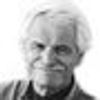
Since 2007, people living in urban areas have made up more than 50 percent of the global population. This proportion has already exceeded 70 percent in Europe and North America, and is growing rapidly. Now urban areas, covering just a few percent of the planet's surface, contain more than three billion people and produce half the planet's wealth.
This means that the conservation of nature depends upon people who no longer have direct contact with it -- unless you count the pigeons and trees that form a part of inner-city biodiversity. Ecology, in many countries, only indirectly involves the countryside and forests: it has become urban.
This transformation brings the need to recreate or make visible the links between urban choices and their consequence, because putting up a building or a road, going to work, shopping, going on holiday, dietary choices: these all have environmental impacts. These activities involve the emission of greenhouse gases, the use of toxic chemicals, and consume various resources. All of these pollute, whether in the heart of our own cities or in those to where work is outsourced.
We should now understand environment as "what surrounds us," and not only flowers and butterflies. This is implicit when we improve urban life. Doing so could be the target of a new form of urban ecology, in line with the objectives of the 2030 Agenda for Sustainable Development. This new ecology could, for example, improve major public-health issues, such as air pollution. Some 1.3 million people die each year because of outdoor air pollution; 2 million die from indoor air pollution linked to dirty cooking and heating fuels, largely in the global south.
It is also a matter of social cohesion, because environmental problems threaten the most vulnerable. In face of the changes ahead, we must re-create new forms of solidarity and learn to live together. We must bring back the sense of conviviality to the cold and impersonal modern cities we know. Transforming society will only be possible if we mend ties between citizens: modern urban ecology can be a new humanism. This is also the meaning of my work and my latest film, HUMAN, which was presented at the United Nations in New York, September 12.
Cities are where many of the changes we need to bring about a sustainable future are already taking place: the list of projects, exemplary initiatives, best practices and hopes being explored by municipalities, local authorities and citizens is long. Cities have become places of unparalleled ecological experiment.
For example, the building sector has great potential for reducing greenhouse-gas emissions. Good double glazing reduces heat loss by 15 to 20%, while a switch to efficient on-grid and off-grid lighting globally would save more than $140 billion and reduce CO emissions by 580 million tonnes every year. All this can be achieved with direct financial benefit to households and local governments. New research suggests that climate-smart cities could save $22 trillion by 2050 and, by 2030, save emissions the equivalent of 3.7 gigatonnes a year -- more than India's current greenhouse-gas emissions.
This urban dynamism is enhanced by the fact that cities are at the right political level to address the problem: mayors have sufficient authority for their decisions to have impact, and sufficient proximity to citizens to hear their voices and answer their aspirations.
There are many examples, but here are just two. In Bogota, Colombia, two mayors (Antanas Mockus and Enrique Penalosa) between 1995 and 2004, brought in reforms to make their city, one of the most dangerous in the world, a place of development and welfare. Their campaigns against road incivility saw traffic fatalities halve, and their campaign against violence saw the homicide rate fall by 70 percent. They also fought against corruption and drugs, revitalized public transport and bicycle paths, and... well, the list goes on and on.
Then there is New York's engagement in the fight against climate change. While the federal government was paralyzed, many U.S. mayors, primarily Michael Bloomberg, took the lead on initiatives to reduce greenhouse-gas emissions. The mayors of the world's megacities have even gathered in an organization called C40 to combat climate change.
This constant political and social innovation is the main asset cities possess in face of the formidable challenges ahead. Urban areas have an unrivaled concentration of talents that drive this process and encourage better access to education and culture -- especially for women. Harnessing these strengths is the challenge for years to come. In order to change the world, we must first reinvent it together, and cities are the best place to do so.
Yann Arthus-Bertrand is a photographer, filmmaker and environmental activist. He has been a Goodwill Ambassador for the United Nations Environment Programme since 2009. At the 1992 Rio conference, he embarked on a massive photographic project on the state of the world and its inhabitants: World From Above. He then created GoodPlanet, which invests in environmental education and the fight against climate change. In 2009, he directed a feature film, HOME, on the state of our planet, which has been seen by nearly 600 million viewers. In 2015, he completed his HUMAN, consisting of interviews with people from all walks in dozens of countries.
This post is part of a series produced by The Huffington Post, "What's Working: Sustainable Development Goals," in conjunction with the United Nations' Sustainable Development Goals (SDGs). The proposed set of milestones will be the subject of discussion at the UN General Assembly meeting on Sept. 25-27, 2015 in New York. The goals, which will replace the UN's Millennium Development Goals (2000-2015), cover 17 key areas of development -- including poverty, hunger, health, education, and gender equality, among many others. As part of The Huffington Post's commitment to solutions-oriented journalism, this What's Working SDG blog series will focus on one goal every weekday in September. This post addresses Goal 11.
